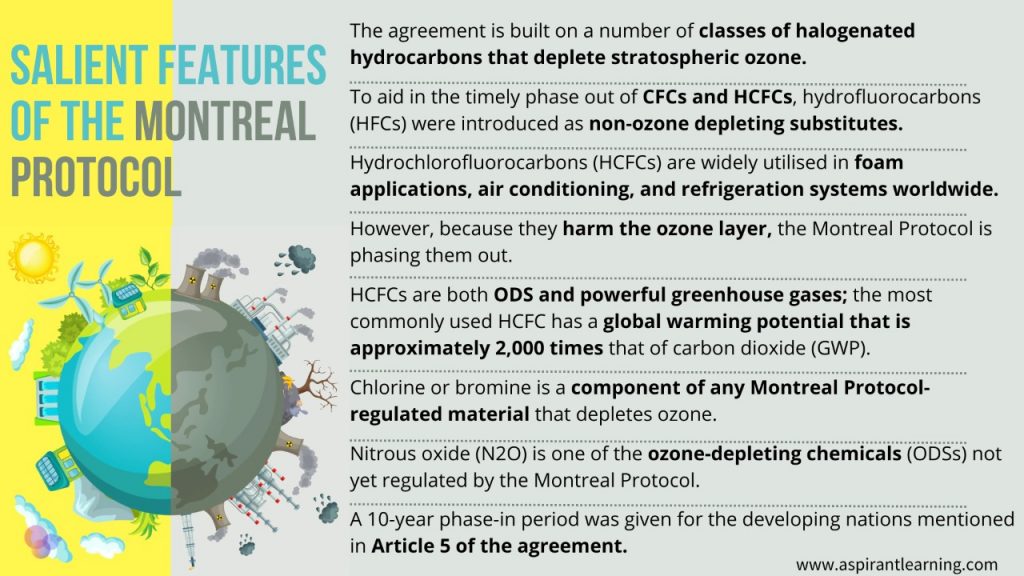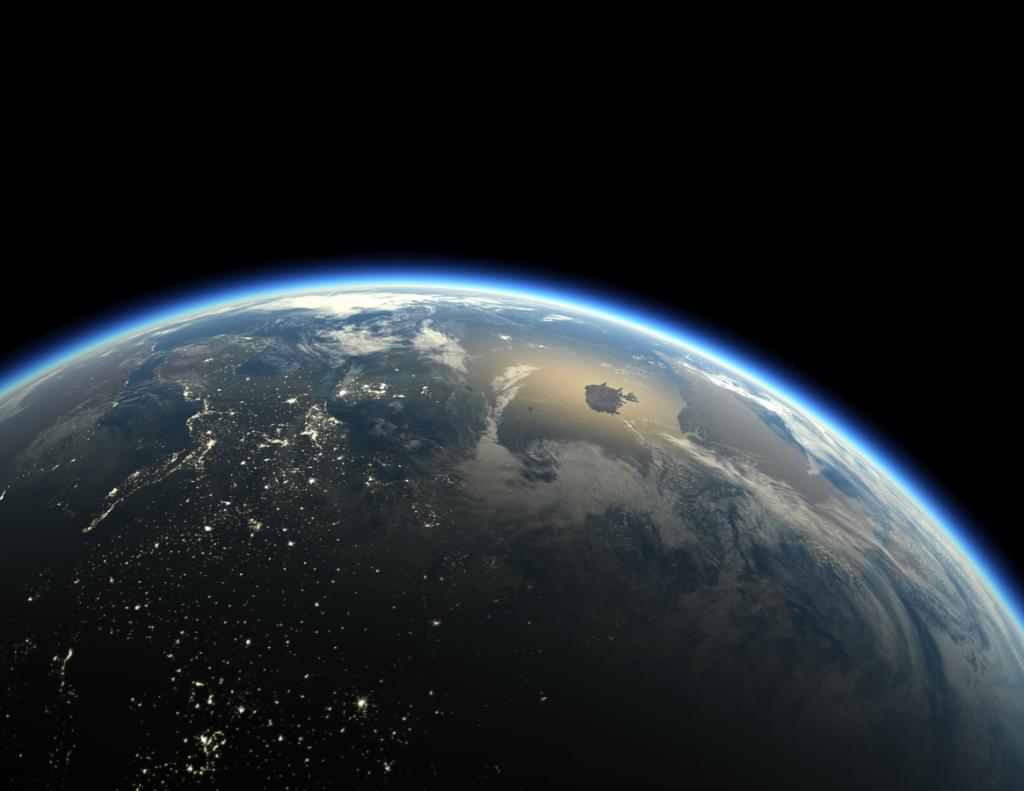News Highlight
Ozone layer to recover in 4 decades, but aerosol injection may undo gains: UNEP.
Key Takeaway
- The successful phasing out of banned substances, as envisioned by the Montreal Protocol, has set the stage for a complete recovery of the ozone layer by the 2060s.
- While this is an achievement, the scientists warned of the detrimental effects of geoengineering technologies such as stratospheric aerosol injection on the ozone layer.
Ozone Layer
- About
- Firstly, it is a high-ozone layer in the stratosphere of the Earth.
- This layer protects the Earth from the damaging UV radiation emitted by the Sun.
- It absorbs 97-99% of UV light from the sun.
- If the ozone layer did not exist, millions of people would be impacted by skin disorders, including cancer.
- UV radiation would also harm the ecosystem, resulting in decreased productivity.
- Depletion of the ozone layer also severely impacts Earth’s biodiversity.
Effect of ozone depletion
- On humans
- Non-melanoma skin cancer.
- Plays a significant role in malignant melanoma development.
- Furthermore, UVB has been linked to the development of cataracts, a clouding of the eye’s lens.
- On Plants
- Firstly, the changes in plant form.
- Affects the timing of developmental phases and secondary.
- Affects flowering and photosynthesis in plants.
- Lower quality crops.
- In addition, the decline in plant productivity would, in turn, affect soil erosion and the carbon cycle.
Impact on Climate Change
- According to the Scientific Assessment Panel, the success of the Montreal Protocol inspires confidence in the scientific community and governments striving to limit greenhouse gas emissions that cause climate change.
- The scientists underlined that the effectiveness of the ODS ban could aid in implementing the Kigali Amendment to the Montreal Protocol, which calls for the phase-out of specific hydrofluorocarbons (HFC).
- Reducing HFC concentrations can help prevent global warming of 0.3-0.5°C over pre-industrial levels by the end of the century.
- Furthermore, the action on ozone sets a precedent for climate action.
- The accomplishment of eradicating ozone-depleting chemicals shows what can and must be done promptly to transition away from fossil fuels, cut greenhouse gas emissions, and limit temperature rise.
Montreal Protocol
- About
- The Montreal Protocol was established to minimise the production and consumption of ozone-depleting compounds and to protect the earth’s weak ozone layer.
- The treaty was opened for signature on September 16, 1987, and it entered into force on January 1, 1989, following a first meeting in Helsinki in May 1989.
- The protocol required a ban on using and commerce of 100 ozone-depleting chemicals (ODS), and 99 per cent of these have been phased out successfully.
- The most recent addition, the Kigali Amendment, called for eliminating hydrofluorocarbons (HFCs) in 2016.
- These HFCs replaced a batch of ozone-depleting compounds phased out under the original Montreal Protocol.

Conclusion
- The ozone layer is a thin layer of the Earth’s atmosphere that absorbs almost all of the sun’s harmful UV radiation.
- The ozone layer, which shields life on Earth from harmful solar radiation, is on track to regenerate within decades.
- Still, disputed geoengineering proposals to address global warming threaten to reverse that progress.
Pic Courtesy: Down to Earth
Content Source: Down to Earth



